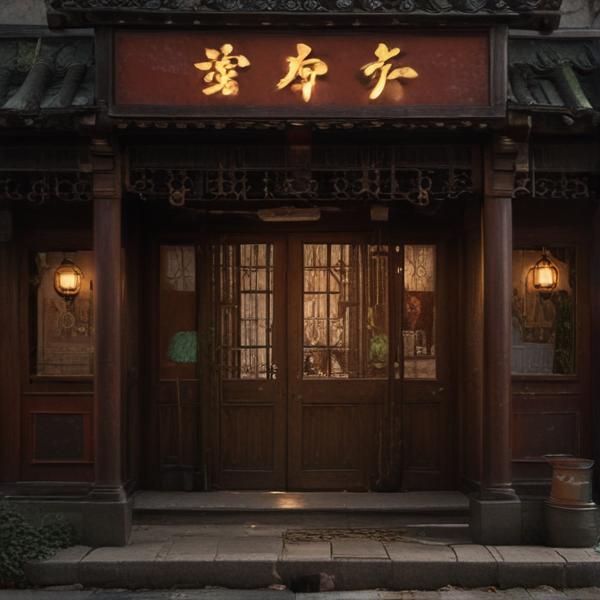基本信息 (Basic Information)
含义与用法 (Meanings & Usage)
中文核心释义 (Core Chinese Meaning): 遮挡用的布帘,常见于舞台、帐篷等处;引申为舞台表演的一场或一段。
英文核心释义 (Core English Meaning): Curtain, screen (especially on a stage); by extension, an act or scene in a performance.
象形意义 / 为何这么写 (Pictographic Meaning / Writing Rationale)
文言文释义 (Classical Chinese Meaning)
与现代意义相近,指遮蔽物或帐幕。在古文中主要用于帐篷、帷帐等。Similar to modern meaning, referring to a curtain, screen, or tent in classical texts.
深入学习 (In-depth Study)
字源故事 (Origin Story)
字形演变 (Character Evolution)
常用词语和例句 (Common Words & Examples)
幕布 (stage curtain; backdrop)
演出结束后,幕布慢慢落下。
Eng: After the performance, the curtain slowly fell.
序幕 (prologue; prelude)
比赛的序幕即将拉开。
Eng: The prelude to the competition is about to begin.
落幕 (to lower the curtain; to come to an end)
本届电影节圆满落幕。
Eng: This year's film festival has come to a successful end.
相关成语 (Related Idioms)
大幕拉开
Meaning: The curtain rises; a grand event begins
多语言翻译 (核心释义) (Translations (Core Meaning))
- French: rideau, toile de fond
- German: Vorhang, Bühnenvorhang
- Spanish: cortina, telón
- Italian: tenda, sipario
- Portuguese: cortina, pano de fundo
- Russian: занавес, кулиса
- Arabic: ستارة المسرح، ستار
- Persian: پرده صحنه، پرده
- Dutch: gordijn, toneelgordijn
- Polish: kurtyna, zasłona
- Vietnamese: màn, rèm sân khấu
- Ukrainian: завіса, куліса
视频学习资源 (Video Learning Resources)
通过以下链接在热门视频网站搜索 "幕" 的更多讲解:
Search for more explanations of "幕" on popular video sites:
- 在 Bilibili.com 搜索 "幕 字源 说文解字" (Search on Bilibili)
- 在 YouTube.com 搜索 "幕 character origin etymology" (Search on YouTube)
网络参考 (Web References for "幕") ()
网络内容摘要 (Web Content Summary):
核心含义:“幕”主要指挂在上方用于遮盖、隔断或围挡的帷幔、布幔,比如帐幕、帷幕等。也是舞台前的帷布,即“幕布”。Core Meaning: The Chinese character "幕" refers to a hanging curtain or drapery used for covering, partitioning, or enclosing, such as a tent curtain or stage curtain ("幕布").
字形与起源:“幕”字形由“巾”(表示布)作意旁,“莫”作声旁。早在《说文解字》中就有记载:“帷幔遮盖在上面叫幕”,突出其覆盖、遮挡的特性。Structure & Origin: The character is composed of the "巾" component (suggesting cloth) and "莫" as the phonetic element. According to ancient texts, it emphasizes the function of covering from above.
常用词与特别用法:“幕”常见于“帷幕”、“幕布”、“开幕”(开场)、“闭幕”(结束)。在现代汉语中,“幕后”引申指幕后工作者或不在台前的人。还常用在成语如“幕天席地”(形容壮观、广阔)和“众志成城,群策群力,群英荟萃,璀璨如星,人才济济,万众一心,群英荟萃。”等,但与“幕”直接相关的成语不多。Common Uses & Notable Points: "幕" appears in words like "帷幕" (curtain), "幕布" (stage curtain), "开幕" (opening), and "闭幕" (closing). "幕后" means "behind the scenes". Set phrases with "幕" are not common, but the character is frequent in theater or performance contexts.
易混淆点:容易与“慕”(羡慕)、“墓”(坟墓)等字混淆,注意“幕”与“布”部首为“巾”,表达“覆盖”的意思。Common Confusions: "幕" may be confused with "慕" (to admire) or "墓" (tomb); remember "幕" has the "巾" radical and relates to covering.
汉字"幕"的起源、演变过程-汉字字源辞典
汉字字源辞典收录2975条汉字词条,基本涵盖了常见汉字的字源解析,是汉字研究的必备工具。 请输入您要查询的汉字: 汉字: 幕: 字源: 幕.
【幕】的甲骨文金文篆文字形演变含义 - 甲骨文研究网 甲骨文密码字典 在线甲骨文字典研究 - 甲骨文研究网 甲骨文密码字典 在线甲骨文字典研究 认路
附 文言版《説文解字》:幕,帷在上曰幕,覆食案亦曰幕。从巾,莫聲。 附 白话版《说文解字》:幕,帷幔遮盖在上面叫幕,遮盖摆放食物的几案的纱帐也叫幕。字形采用"巾"作边旁,采用"莫"作声旁。 文言文名句摘抄 ①名词:营帐中遮挡视线的大布。
更多图片 (幕 More Images) ()
